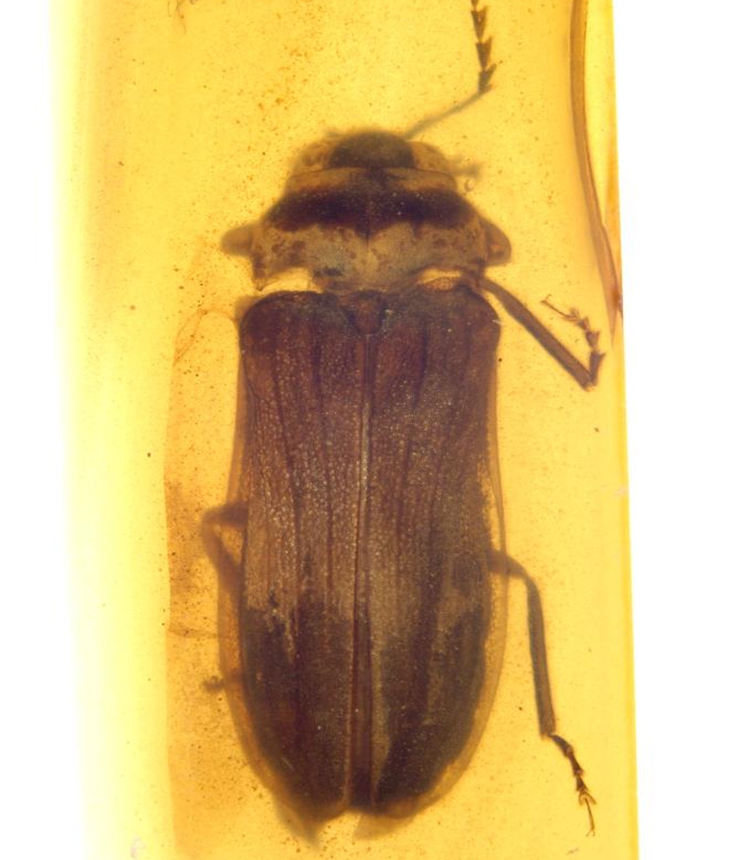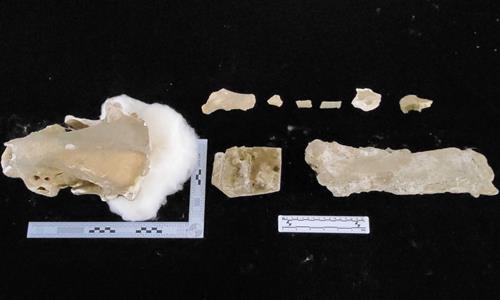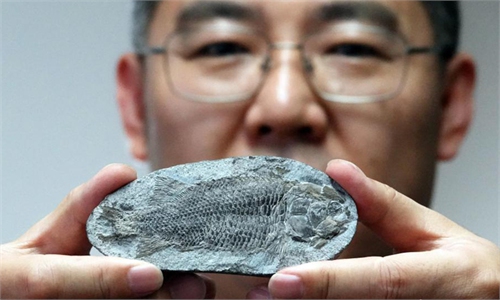ARTS / CULTURE & LEISURE
New discovery of 100 million-year-old firefly fossil sheds light on evolution

The Flammarionella hehaikuni firefly fossil Photo: Courtesy of the Nanjing Institute of Geology and Palaeontology
A recent research project led by the Nanjing Institute of Geology and Palaeontology of the Chinese Academy of Sciences has unearthed a new firefly fossil preserved in 100 million-year-old Burmese amber in Hukawng Valley, northern Myanmar, offering new insights into the evolution of bioluminescence.The fossil, dating back to the mid-Cretaceous period, represents a new genus and species of firefly. The research team, led by professor Cai Chenyang, has named the species Flammarionella hehaikuni. The teams findings have been published in the biological journal Proceedings of the Royal Society B.
"This ancient firefly presents a distinctive feature - a set of elongated antennae with triangular serrations, equipped with oval-shaped sensory receptors," Cai told the Global Times in an interview on Monday.
He added that while this is not the first firefly fossil discovered from the Cretaceous, the higher degree of morphological differentiation in this specimen suggests that multiple firefly species existed during that period.
Measuring less than 1 centimeter in length, this ancient firefly specimen had long antennae, transparent wings, and a bioluminescent organ near the end of its abdomen, much like fireflies do nowadays.
The fossil clearly displays this light-emitting organ, indicating that fireflies possessed bioluminescence as far back as the Cretaceous, and that the bioluminescent organ has remained largely stable through evolution.
Additionally, the firefly's antennae feature elliptical sensory receptors, which the research team has stated were likely specialized olfactory organs used to find mates at night.
"Based on the detailed analysis of the fossil, we speculate that the bioluminescent organ of this Cretaceous firefly was used not only for attracting mates, but also for communication between individuals," Cai said.
In 2021, a team of Chinese, Czech, and British paleontologists discovered an ancestral firefly in Burmese amber from the same period.
The Chinese research team at the time was also led by Cai. During that study, over 20,000 pieces of amber were examined, leading to the discovery of a well-preserved male firefly ancestor which was classified under the family called Cretophengodidae.
It's worth noting that while today's fireflies emit light from the end of their abdomen, this ancient specimen's light-emitting organ was located closer to the front of the abdomen.



